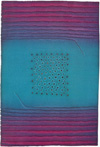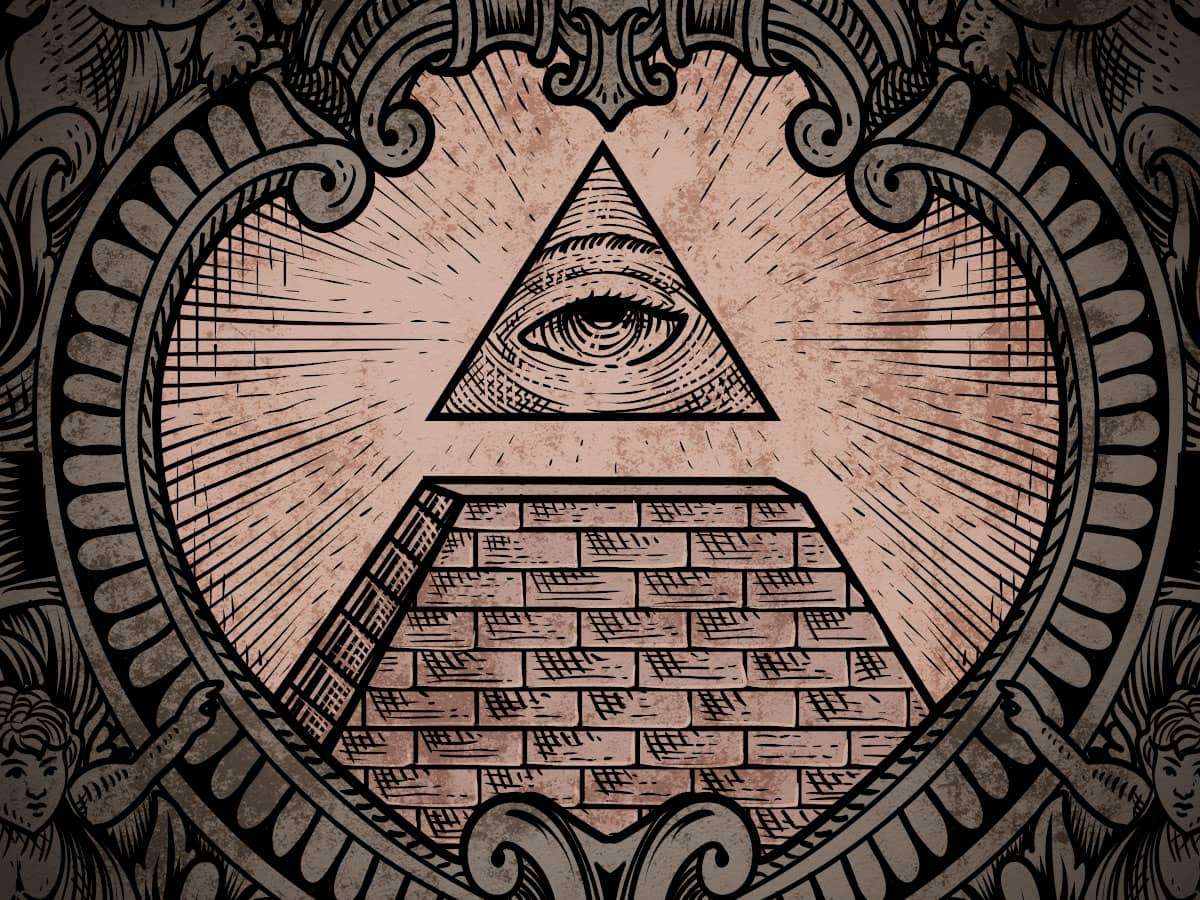 Informed by Eastern spiritual traditions, the art of Sohan Qadri neither evokes thought nor connects the viewer to anything outside itself; like meditation, it turns the attention inwards. Qadri, 72, lives in Denmark and exhibits all over the world. Recently, his work was shown in New York's Sundaram Tagore Gallery, where he spoke with Vibhuti Patel.
Informed by Eastern spiritual traditions, the art of Sohan Qadri neither evokes thought nor connects the viewer to anything outside itself; like meditation, it turns the attention inwards. Qadri, 72, lives in Denmark and exhibits all over the world. Recently, his work was shown in New York's Sundaram Tagore Gallery, where he spoke with Vibhuti Patel.

|
Image Gallery Ten paintings from "Seeker: The Art of Sohan Qadri" |
What is your religious background?
I was born in a non-traditional Sikh family. My guru Bhikham Giri was a Tantric Vajrayana yogi. Vajrayana is a ritualized form of Buddhism, it's where Hinduism and Buddhism meet, Zen is its offshoot. In Tibet it's called Lotus Sutra.
How did you meet Bhikham Giri?
He was a temple dancer and musician who became a renunciate and lived in an abandoned Shiva temple on the edge of our farm. I was a quiet child and my parents thought he'd help me come out of myself. I was to learn music from him, not these spiritual things. I visited him everyday after school. Whatever he did, I copied; he inspired me to join him in his rituals and, since I was good at drawing, he asked me to inscribe yantras (geometric designs used as meditation tools) on his mud walls. His deep voice still resonates in my head-it made me vibrate. He didn't talk much but just by being near him, I learned powerful rituals: visual (focusing on a yantra or a candle), aural (chanting or mantra), and the preparation for rituals (pranayama, the science of breathing). He was a master of prana, he'd breathe in and his eyeballs would pop out, he'd go into a trance. I learned by observing him, by being with him for hours. I was with him from age 11 to 33, when I left India.
And Qadri was your Muslim mentor?
I went to this famous Sufi tomb on the other side of our farm where Qadri used to give kids candy! His sadhana (spiritual practice) was "mirror meditation." While talking to you, he held a small mirror in his hand and looked into it repeatedly. The art of "witnessing" is a very mystical teaching: Who are you? You're not what the mirror shows, that's just a shell. You can go deep with this practice. The mirror serves the same purpose as a candle or yantra. Qadri practiced this tantric meditation all his life and gave me this mirror which I carry everywhere. It's not narcissim, it's the exact opposite: it's transcending your self. I learned this silently, without a word being exchanged. I stayed with him until he died.
How did you juggle a Buddhist, Shiva-temple guru with a Muslim pir (spiritual guide/teacher)?
Sadhus (holy men) continually came to our village, my mother would take me to one, then to another, sometimes in the same day! Often, we'd go to our gurdwara (Sikh temple) in the morning; at noon, we'd go hear someone talking about Advaita (Hindu philosophy); the evening might bring a Sufi. Our village was half Muslim, half Hindu, we were not divided by religion, we mingled, we lived in harmony. When my mother's cattle was sick, she'd go from one holy man to another asking for boons.
What made you adopt Qadri's name?
Before my first exhibition, I had a vision that my name would not fit under my painting-"Sohan Singh" did not look right. That's when "Qadri" came into my head. The master himself was not using that name-it was not important to him, his mirror was! He was called "guruji." I never called him "Qadri" but when I signed it on my first painting, it looked right. The choice of that Hindu-Muslim, Sanskrit-Persian combination thrilled me later.
Do Sufis meditate?
Sufis do namaz (prayers from the Koran, recited 5 times a day by devout Muslims), then they sit quietly. Islamic meditation is silence. Hindus chant and dance, my guru was always dancing! He'd have someone play the tabla and sitar, while he sang. At the mosque there was silence-no sound, no noise. It was visual. I loved it.
No, because it was not a traditional regimented education, I was free to see them when I chose.
Were you influenced more by one or the other?
No, it was completely equal. There was no problem because the flesh and intellect were left behind. Now, at 72, I can reflect on all that, but then I did not. I had no educational background; everyone in my village was illiterate, I was the first to matriculate.
How did you come to paint?
I'd always made figures-in clay, on mud walls, drawing as children do. I wanted to be a painter but there was nobody to guide me. Our village photographer explained that photography is also an art, so I studied with him; he told me about art college. My mother wanted me to take care of our farm but my father said, let him be. Bhikham Giri saw that I was going to be a good artist. When I told him of my first show in Delhi, he said, "I know..."
Talk about your art.
I avoid the distraction created by images. If one's mind starts playing with the known, then the unknown will not be discovered. Certain arrangements of color and shape on the space entice you to find a story, but the moment you find one, you become blind to what you're seeing. You go away, mentally, you're knitting your own story about the painting, you're away from this painting. I want the viewer to stay with this painting completely because that's one-pointed meditation.
Painting facilitates meditation?
Some paintings have the power to shut off the viewer's mind: in that little moment, the message is clear; after that, you start interpreting it, enjoying it. But the essential thing has already happened in that split second when you're not enticed to think, when your sensibilities are quieted. If you can't stop reacting intellectually, you build other images-then, it's not this image, you're away from here, you concoct an image which is a superimposition. To be directly with it, that process of interpretation has to be stopped.
This response is meditation?
Certain paintings put you in a state of awe for a split second when the interpreting mind shuts down, this is what happens in meditation. You don't meditate upon anything-if you do, then you're attached to that object; meditation is beyond object. You start with the mantra, then you go beyond it; when you have this mirror, you start with the body, then go beyond body. Painting does the same: it's a mirror, but if you get stuck in the mirror and start interpreting-"this is good," "that's bad"-then you lose the painting, it does not seep into your system.
What do you see when you look in that mirror?
I see beyond me, beyond skin; I see beneath, down deep where there is complete silence, complete darkness. Darkness is where peace is, it's synonymous with silence. Our universe is 99% dark, space is dark, we have very little light. We're replicas of our universe, we're dark inside. I call this the darkness of recognition. When you look at a painting, it arrests your thought process-your superimposition-then you imbibe it for a moment. You can interpret it later, but that moment must happen. Yoga extends that moment-which happens in spite of you-into eternity: to live in that always, to have that taste continuously, in everyday life, right in the crowd, not on the mountain or in the cave.
Do you feel that when you're painting?
No, I feel that when I look at my painting. When I create, I'm not there. Painting comes from beyond. When I start, I am completely blank. When I'm friends with blankness, good things come. I have no idea what will come, I must be clean like the canvas-innocent, spotless. I have 20,000 ideas, but they must be thrown away. I must be as empty as the canvas, without concepts, evoking images that my hand will fix.
You paint in a meditative state?
Yes, I start from emptiness, then the two emptinesses (mine and that of the paper) communicate. Emptiness and fullness cannot communicate because they conflict; out of conflict only conflict can come, not harmony. You can't get an elephant child from a camel.
Your colors are brilliant.
I don't intervene with colors, I don't fight with them, or dissipate them to suit my thought process, I take them as pure as they come. Some artists say, "I decided to..." I don't let my thought into it. For me, color must stand clearly on its own, in its own intensity.
What about the designs, beautiful patterns, the lines, circles, holes...?
That is the geometry of verticality and horizontality, they're important in visual images: I'm a vertical because the spine is vertical, samsara is horizontal; if we become oblique it's psychedelic. That creates sensation not silence. Some paintings have the power to break down your sensational expectation because they don't offer you anything to stand on, they have the power to break down your chattering mind, then you fall into silence. That's what my paintings try to do, because in silence we are the same. The moment we talk, we start differing.

